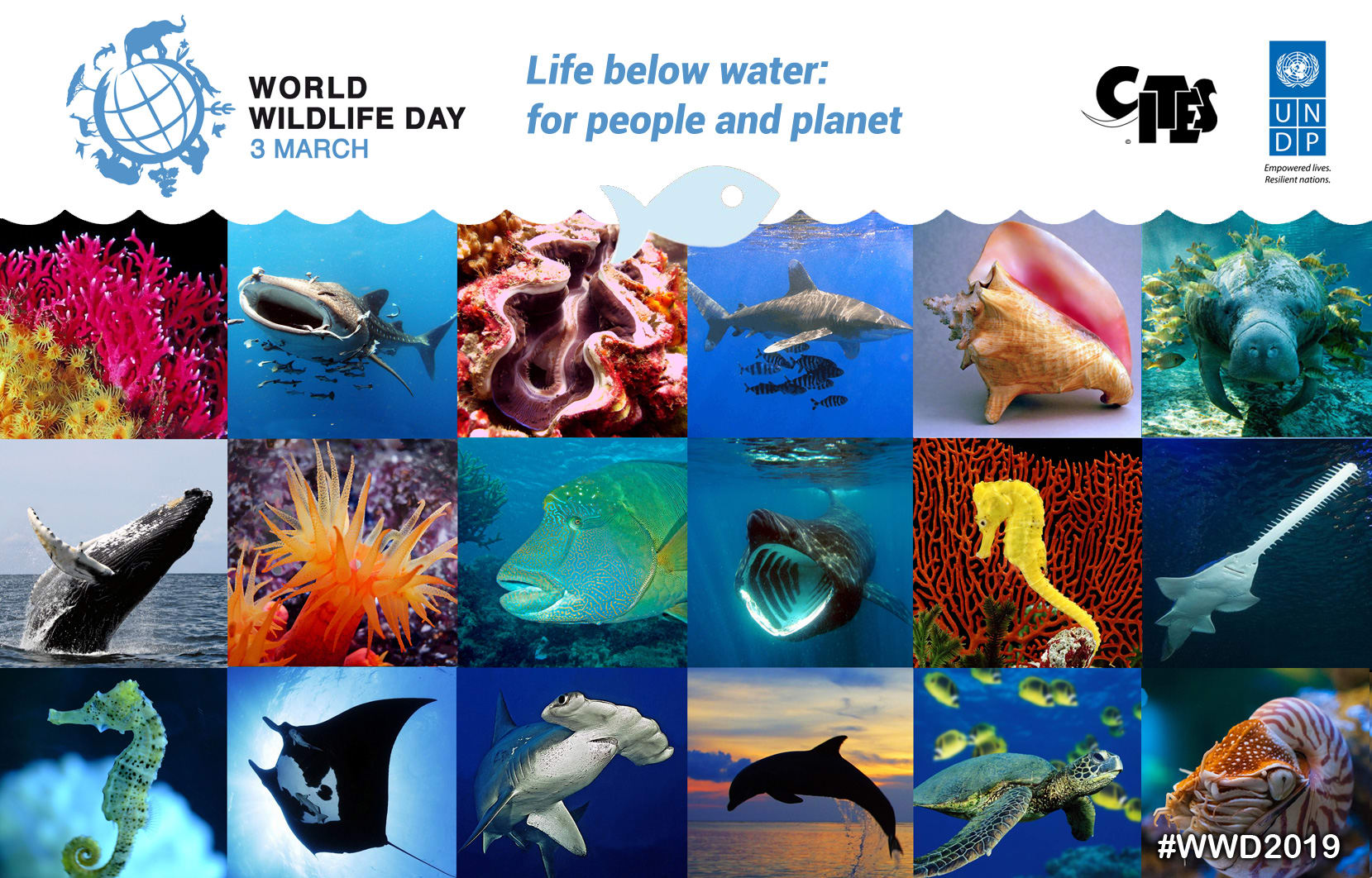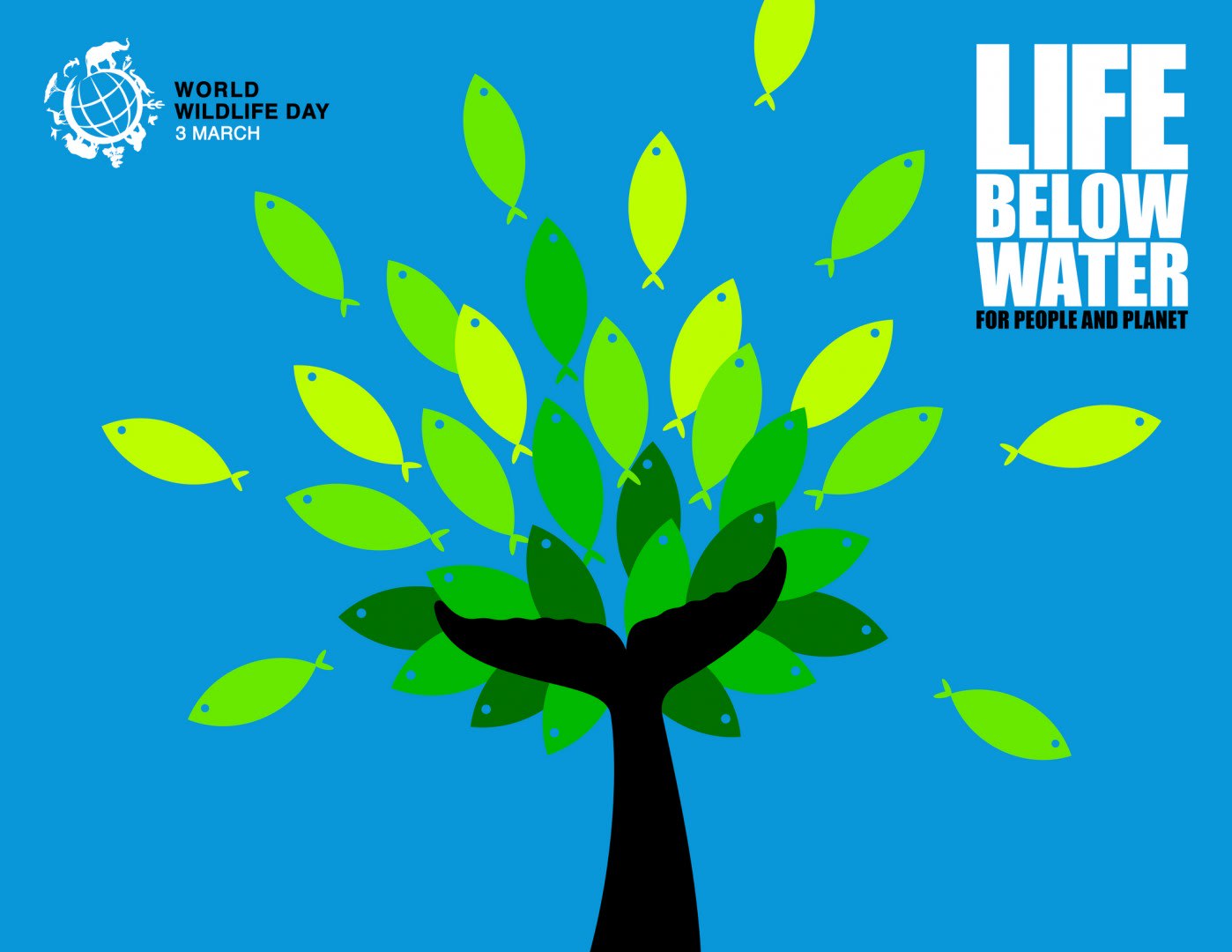World Wildlife Day 2019 aligns closely with UN Sustainable Development Goal 14 – Life below water, which focuses on marine species, and will be a chance to highlight the crucial importance and value of marine wildlife to our everyday lives, to celebrate successful initiatives to conserve and sustainably manage these species and to scale up support for such initiatives.
Abdoulaye Mar Dieye, UN Assistant Secretary General and Director of UNDP’s Bureau for Policy and Programme notes, “Oceans regulate our climate, produce half the oxygen we breathe, provide nourishment for 3+ billion people, and absorb 30% of carbon dioxide released into the atmosphere and fully 90% of the heat from climate change. To ensure that oceans and marine species are preserved and protected, nature-based solutions that bring together public, private and civil society partners need to be replicated and scaled-up.”
David Morgan, Officer-in-Charge of the CITES Secretariat, said: “All whales and dolphins, all marine turtles, all seahorses, many coral species, and more and more shark species have been put under the protection by CITES - the world’s wildlife trade regulator. For marine species, CITES is at the interface between sustainable use and international trade for fisheries, working to ensure that trade in marine species listed under the Convention is legal, sustainable and traceable. CITES plays a well-targeted role in advancing implementation of SDG 14 with trade-related measures combined with effective compliance procedures.”
World Wildlife Day 2019 will be marked by a series of events and media activities around the world, including a high-level event at UN Headquarters in New York on 1 March (Friday). As part of these activities, CITES and UNDP are also partnering with the Jackson Hole WILD to organize an international film showcase focusing on marine species – “Living Oceans Film Showcase”. The film showcase will help raise global awareness of the importance of life below water to our everyday lives, explore the critical challenges facing marine ecosystems, and highlight inspiring solutions.
The International Fund for Animal Welfare will also host a youth art contest to engage school-aged children and help them build a sense of connection with the marine world. Winners of the Living Oceans Film Showcase and the youth art contest will be announced at the high-level event in UN Headquarters.
There are few images that evoke the words “vast” and “endless” as effectively in the human imagination as those of the ocean and the life teeming within it. Oceans and seas make up two-thirds of the world’s surface, and due to their depth even more than 99% of earth’s livable habitat.
The resulting richness of ecosystems and species, Life below water, has sustained human civilization and development for millennia, from providing food and nourishment, material for handicraft and construction to the very air we breathe. 50% of the oxygen on Earth is produced in the ocean, every second breath we take.
Yet despite, or precisely because of, the perceived limitless nature of the oceans and marine living resources, their ability to sustain mankind and contribute to sustainable development has been severely impacted by unregulated or poorly managed human activities, including unregulated fisheries, pollution and climate change.
In collaboration with all relevant stakeholders, CITES is also deeply engaged in capacity building to assist Parties to overcome the challenges in ensuring long term sustainability of trade in species listed under the Convention, as recognized in the annual UN General Assembly on Sustainable Fisheries.
UNDP’s Ocean Governance Programme is strongly aligned with and supports a majority of targets for Sustainable Development Goal (SDG) 14 on oceans – to conserve and sustainably use the oceans, seas and marine resources for sustainable development.
In the lead up to and since the adoption of Agenda 2030 and its Sustainable Development Goal 14, Life below water, an inspiring number of initiatives focused on the sustainable development of the oceans and seas has emerged, reflected in the over 1,400 voluntary commitments made at the UN Ocean Conference in 2016.
In line with the UN General Assembly Resolution proclaiming World Wildlife Day, the CITES Secretariat and UNDP call on all member States and organizations of the United Nations system and other global, regional and sub-regional organizations, non-governmental organizations and all interested individuals, to:
- observe and raise awareness of the theme for World Wildlife Day 2019;
- associate the celebrations with major national and international conservation events;
- build collaborative partnerships;
- organize campaigns to support the conservation and sustainable use of marine living resources and their products using targeted strategies in order to influence consumer behavior; and
- make use of the World Wildlife Day logo as widely as possible.
More information on the conservation and sustainable use of life below water and promotional materials to illustrate the theme will be made available at a later stage on the World Wildlife Day website and social media platforms.










